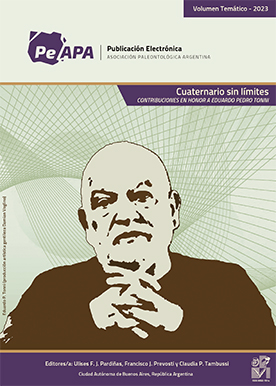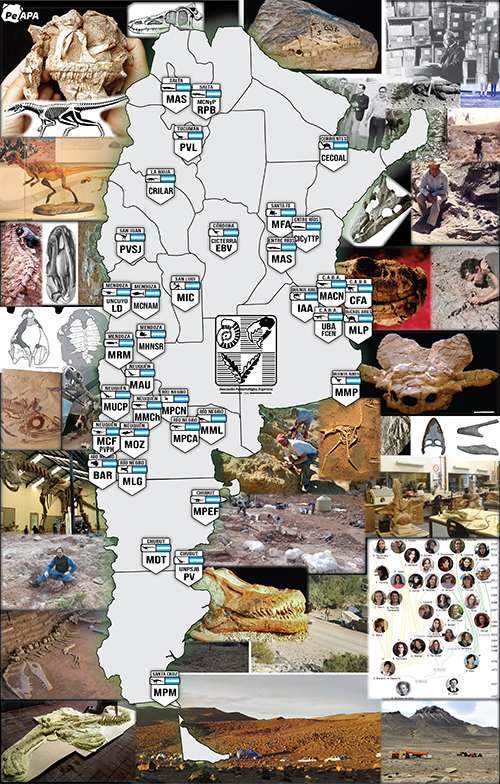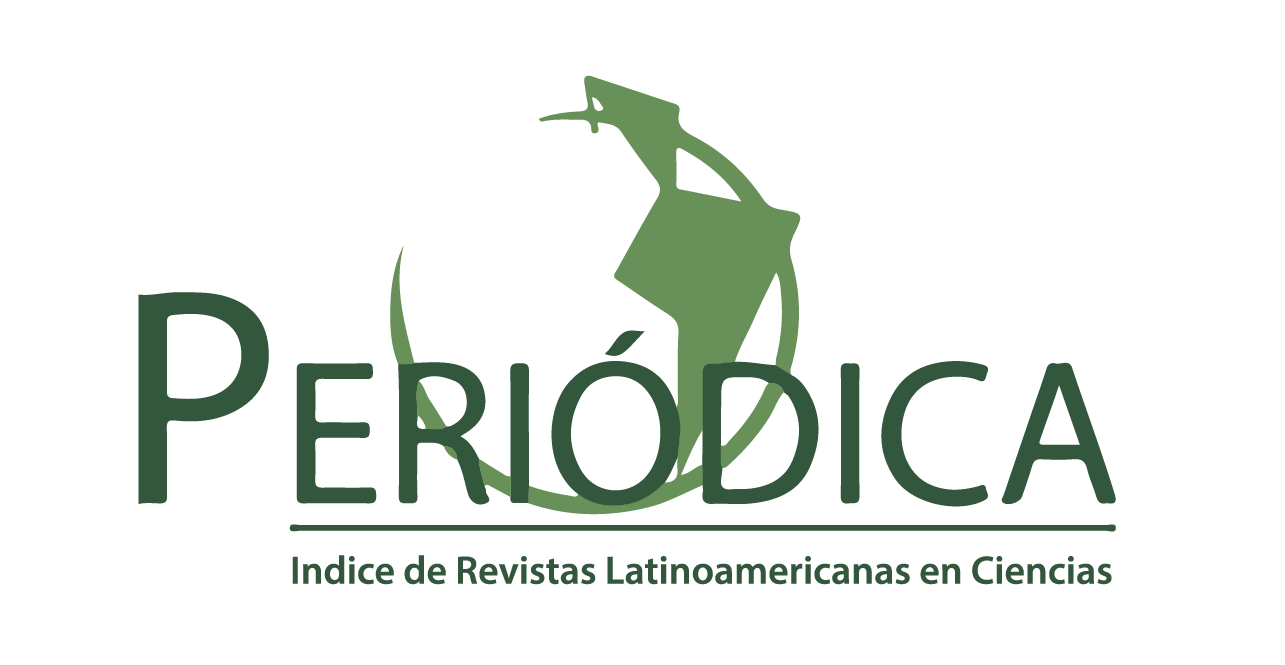THE LATE CRETACEOUS VERTEBRATE ICHNOFACIES OF BOLIVIA - FACTS AND IMPLICATIONS
Resumen
Cretaceous dinosaur tracks are known in Central Bolivia since 1968. Recent work shows that tracksites are widespread and occur in multiple layers from the Campanian to the Late Maastrichtian. The ichnofauna is associated with alluvial to deltaic as well as lacustrine settings. Several new sites with tracks of titanosaurids and theropods in the upper part of the Chaunaca Formation (Campanian) correspond to similar stratigraphic levels in the Toro-Toro Formation further north. The Late Maastrichtian deposits yield a megatracksite that spreads from southern Peru (Vilquechico Formation) to the Central Bolivian Andes (El Molino Formation) down to the Salta province in northern Argentina (Yacoraite Formation). The ichnofauna of the El Molino Formation has been studied at the Cal Orcko locality, close to Sucre (Bolivia). The main trackbearing surface is a lacustrine limestone (25,000m2) which is steeply inclined (70°); it has been mapped with heavy climbing equipment in 1998.The trackbearing levels show episodic pedogenesis, stromatolites and tempestites and were deposited in ephemeral and perennial lakes. 313 trackways on nine levels have been registered. Five different types of dinosaurs are present. Among those are medium-sized titanosaurs, small to intermediate sized theropods and few ornithopods. For the first time, tracks of ankylosaurs on the South American continent can be demonstrated. The high diversity of the track assemblage clearly demonstrates that there was no gradual decline in dinosaur diversity towards the end of the Cretaceous and favours a drastic event at the K/T boundary.
KEY WORDS. Dinosaur tracks. Sedimentology. El Molino Formation. Maastrichtian. Paleoenvironment. Bolivia.
Descargas
Publicado
Número
Sección
Licencia

Los/las autores/as conservan los derechos de autor/a y garantizan a la revista el derecho de ser la primera publicación del trabajo licenciado bajo una licencia CC Attribution-NonCommercial 4.0 que permite a otros/as compartir el trabajo con el reconocimiento de la autoría y de la publicación inicial en esta revista.




















